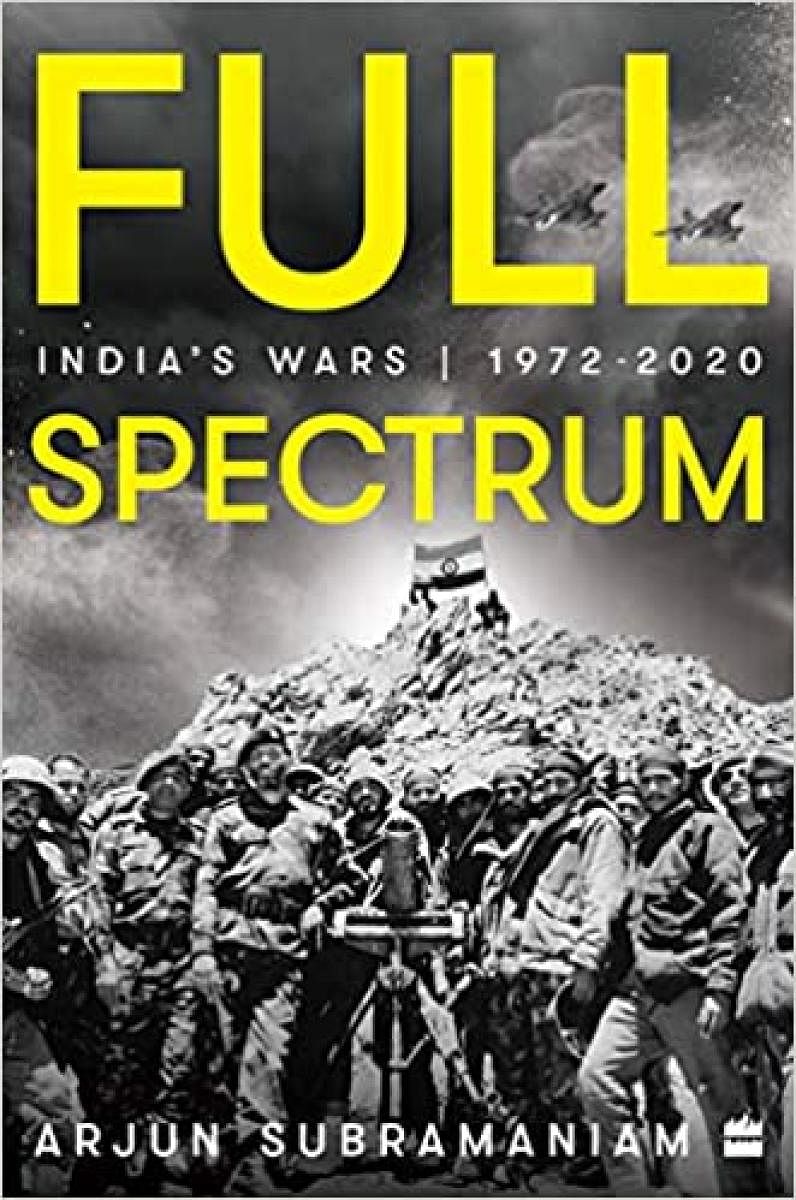
The bravery, valour and sacrifices of the Indian armed forces never fail to touch a chord and many films on this theme have enthralled the audience over the years. While these largely fictionalised versions of actual combat situations nurture a sense of pride and patriotism among the masses, a well-researched, military-oriented literature will always make a bigger contribution.
Air Vice Marshal (retired) Arjun Subramaniam’s book, Full Spectrum: India’s Wars (1972 to 2020) (which is a sequel to his earlier book, India’s Wars: A Military History, 1947-1971), is undoubtedly a seminal work of great significance. He combines his decades of field experience in uniform with the scholarly approach of a military historian to present an eminently readable account of the operations in the Northeast to Op Blue Star, Op Parakram, peace-keeping operations in Sri Lanka and the UN operations, the long-festering insurgency in Kashmir, the Kargil war and several others.
Though being an ‘insider’ with possible attachment to many of the developments, Subramaniam manages to provide, by and large, a dispassionate account of the highs and lows of marquee events without shying away from naming names and offering critical, but balanced analysis. The fact that he relied on regimental archives, personal diaries and interviews with over a 100 top-notch serving and retired officers while writing this book not only makes it an authentic narration, but also a useful guide for future operations.
General Krishnaswamy Sundarji, as head of the Western Command and later as the army chief, figures quite prominently in at least three important military operations: The storming of the Golden Temple at Amritsar, taking on the Chinese aggressors in the Tawang region of Arunachal Pradesh and the peace-keeping operations in Sri Lanka. While Sundarji’s ‘Operation Falcon’ helped India to see the Chinese Dragon in the eye with an innovative concept of having a mountain strike corps and integrated battle troops in an offensive formation and beating them back to assert India’s claim on the McMahon Line, the other two military adventures were near disasters.
How the ‘good’ Generals influence the destiny of nations and its leaders, while Generals who hesitate to speak their mind or suffer from hubris drag them down, are demonstrated by the Bangladesh war of 1971 and the army operation on Golden Temple in 1984. Ms Indira Gandhi was the prime minister on both occasions. While Gen Sam Manekshaw was able to convince Ms Gandhi that he needed time to attack East Pakistan and achieved a glorious victory, Gen Arun Vaidya and Sundarji hastened the army action at Amritsar, which had far-reaching consequences of deeply scarring the psyche of the Sikhs, leading to the assassination of Ms Gandhi, a revolt in the army and giving a fillip to the Khalistani movement in Punjab, which dragged on for years.
Similarly, the ill-advised Indian army’s intervention in Sri Lanka when Rajiv Gandhi was the prime minister was another failure which, the author notes, taught India many a lesson.
More mobilisation
Subramaniam dwells at length on the stationing of Indian troops at the extremely challenging heights of the Siachen glacier for the past three decades, its strategic importance against both China and Pakistan and how the soldiers are paying a heavy price. The situation in Jammu and Kashmir is dealt in two separate chapters, giving a historical perspective to the early rumblings, the rise of militant groups, unhindered infiltration of jihadis from across the border and the army’s many-layered approach to deal with an extremely tough situation.
If there can be any criticism of the book, it is about the author only making a passing reference to India’s tepid response to the Parliament attack in 2001 and the Mumbai terror attacks in 2008. A detailed analysis of the political and military failure to fashion a fitting response was very much in order.
The author notes that having realised its mistakes, the Indian military establishment has been working on speeding up the army’s mobilisation schedule at very short notice and achieving greater synergy in planning simultaneous operations by all three armed forces. While pointing out that “there is a growing willingness by India to move from reactive to proactive deterrence,” he cautions against taking hasty steps in the absence of a well-defined and robust national security architecture.